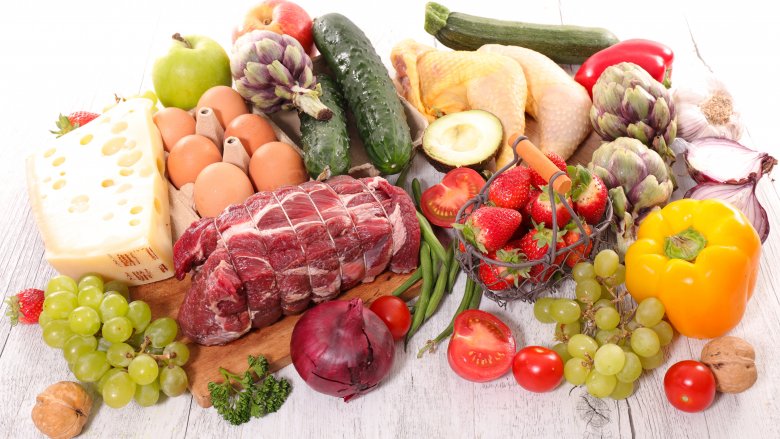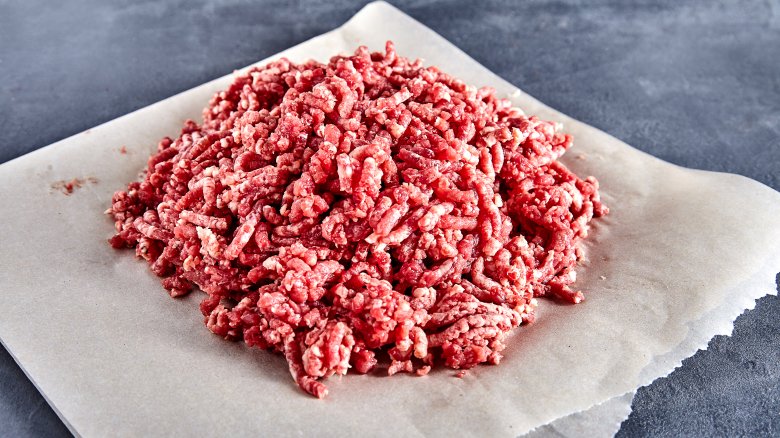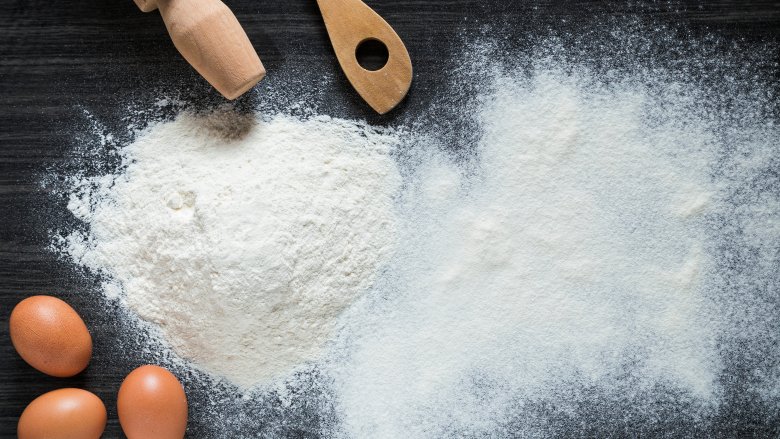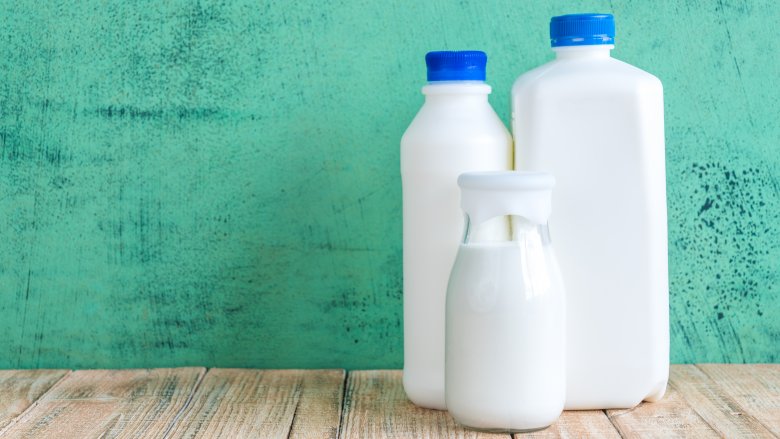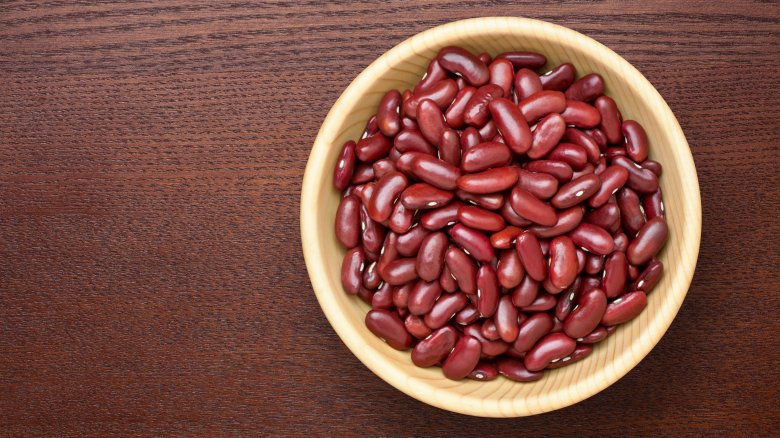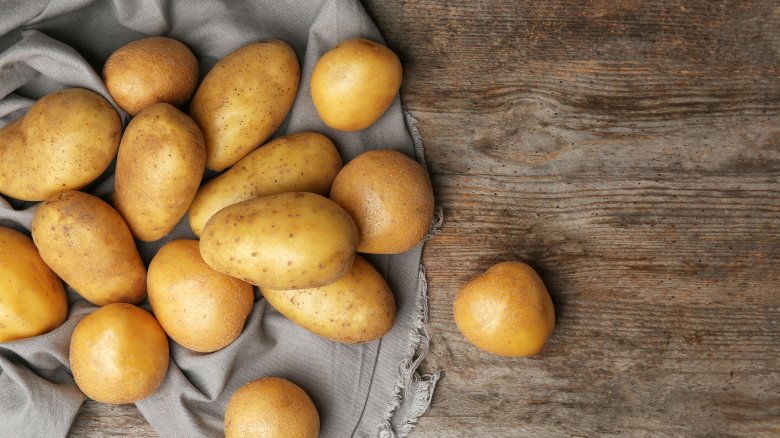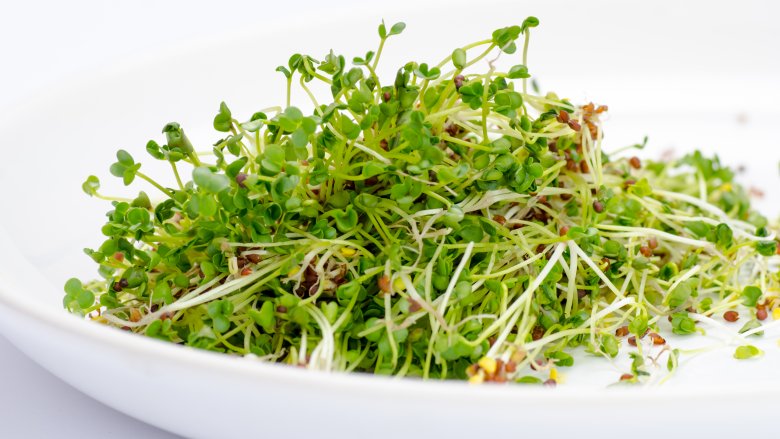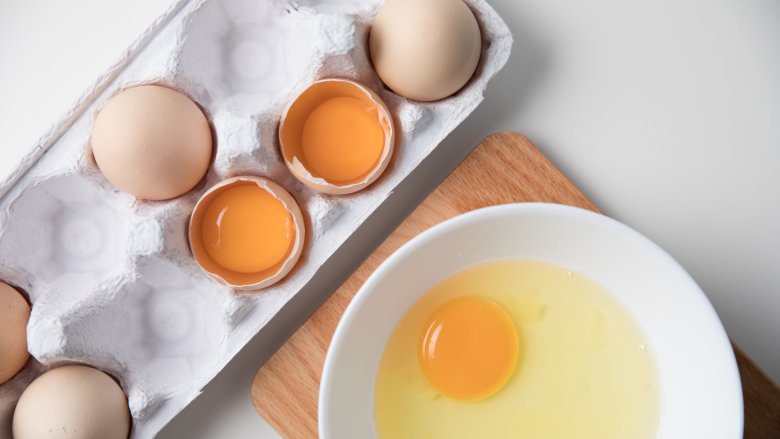Foods You Should Never Eat Raw
Raw foods are all the rage these days, and if you like to keep up with the latest diet trends, you may have already dipped your toe into the raw food arena at some point. But do you really know which foods are best eaten raw? Or even which foods are safe to eat raw?
Before you go head first into an all-raw-all-the-time eating regimen, there are a few things you might want to know about your new way of life. Some of the foods on this list might seem a bit obvious — like chicken. Surely people aren't willingly chowing down on raw chicken, are they? Yes, it turns out they are, thanks to one dish that's popping up on restaurant menus. Other foods on this list might surprise you — there's a reason you'll want to keep your hands off the raw cookie dough, but contrary to what we've always been told, it's not just the eggs you have to worry about.
So what else should you avoid? Here's the skinny on all the foods you should never eat raw.
Chicken
One of the first things we learn when it comes to cooking meat and poultry is that rare chicken is a no-no. So why would anyone eat raw chicken? Because some restaurants are serving it, that's why.
The dish is called torisashi, or chicken sashimi, and you might be tempted to try it if you find it on a restaurant menu. After all, it is a trained chef preparing it, so it must be safe, right? Very wrong. Lauri Wright, PhD, an assistant professor in public health at the University of South Florida told Healthline that this food trend is "dangerous." "Chicken is considered one of the top foods for food poisoning," she said. "Eating raw chicken only increases your risk for salmonella and campylobacter bacteria. There is no safe raw chicken."
The CDC recommends cooking chicken to an internal temperature of 165 degrees, and torisashi is typically seared for no longer than 10 seconds — not a sufficient amount of time or heat to kill harmful bacteria. Unless you're looking forward to nausea, vomiting, stomach cramps, and diarrhea, it's probably best not to roll the dice on raw (or even lightly seared) chicken.
Ground beef
Okay, now that we've crossed raw chicken off our to-eat lists, what about the other kinds of raw meat? While we eat steak tartare without a second thought, ground beef is another matter altogether.
Again, you might be asking who exactly is eating raw ground beef? Those who follow a raw paleo diet, that's who. While followers of the diet sing its praises, the USDA warns of the dangers associated with eating raw ground meat, particularly E.coli infection. Because the E.coli bacteria can survive in refrigerators and freezers, not to mention multiply at temperatures as low as 44 degrees, it is essential that ground beef be cooked to a temperature high enough to kill it (which is 160 degrees if you're following USDA guidelines).
Still not convinced? Here's a fun fact: A study by Consumer Reports of 458 pounds of ground beef found every single sample to contain "bacteria that signified fecal contamination (enterococcus and/or nontoxin-producing E. coli)." So essentially, all our ground beef contains poop, which seems like a great reason not to eat it raw, doesn't it?
Flour
Admit it — you've purchased a tube of Nestlé Toll House cookie dough with no intention of actually baking the cookies, even though you've been warned your whole life that it will make you sick, thanks to the raw egg it contains. But it turns out that Mom wasn't quite right about that — the dough might still make you sick, but it's not because of the eggs like she always said.
When an E.coli outbreak in 2009 was traced back to raw Toll House cookie dough, further research determined that the likely culprit was the flour, not the pasteurized eggs used in the recipe. As innocuous as flour might seem, it is a raw agricultural product, which according to the CDC, means that it "hasn't been treated to kill germs like E.coli," and the only way to ensure that these harmful bacteria are killed is to fully cook batters, doughs, or anything containing flour. The CDC warns that even the handling of raw dough for crafts, such as homemade play clay, can cause sickness in children.
Are a few bites of heaven worth severe stomach cramps, bloody diarrhea, and vomiting? That all depends how much you love cookie dough.
Milk
It's probably a bad sign when something has been banned for sale in 20 states, and yet there are still plenty of people out there who drink raw milk for its supposed health benefits, never mind all the statistics that paint a fairly bleak picture about its dangers.
Raw milk can contain harmful bacteria, viruses, and parasites that would otherwise be killed in the pasteurization process, and according to the CDC, "the risk of an outbreak caused by raw milk is at least 150 times higher than the risk of an outbreak caused by pasteurized milk." From 2007 to 2012, it caused 81 outbreaks in 26 states due to germs like campylobacter, E.coli, salmonella, and listeria.
But what about those supposed health benefits? Maybe raw milk is worth it after all. Not according to the FDA, who says that pasteurization definitely does not reduce milk's nutritional value, nor does it cause lactose intolerance and allergic reactions, as some believe. Most importantly, raw milk does not kill dangerous pathogens by itself, but it could kill you (or at the very least, make you sick).
Kidney beans
Raw kidney beans probably aren't on your typical dinner menu, and that's a good thing — they're incredibly toxic. Although other beans contain it, phytohaemagglutinin levels are unusually high in uncooked kidney beans, and the chemical can cause severe gastrointestinal upset within a few hours of consumption, from as few as four raw kidney beans.
But nobody in their right mind is popping these raw, so what's the worry? Well, even undercooked kidney beans can cause illness, and — bad news for all you Crock-Pot lovers out there — slow cooking your kidney beans is a good way to get sick. Livestrong reports that an analysis found "inadequately cooked" beans still contained high levels of the toxin, and to avoid any risk the beans must be soaked overnight and then boiled for a minimum of 10 minutes. Low and slow cooking just doesn't cut it here, as the beans don't come to a high enough temperature for the toxin levels to drop. Canned beans are sounding pretty good right about now, aren't they?
One last public service announcement: If your kids ever play with dry beans at craft time, you'll probably want to pick out the kidney beans to avoid a bout of vomiting and diarrhea.
Potatoes
Apparently there are people who enjoy snacking on raw potatoes, like this reader of The San Diego Union-Tribune who actually prefers them to cooked, and wrote in to inquire whether or not their somewhat unusual eating habit was safe. So what's the verdict?
There are a few reasons you'll probably want to avoid a steady diet of raw potatoes. First, they contain resistant starches, which our bodies cannot break down, meaning they're rendered indigestible and provide little nutritional benefit. As an added bonus, as the undigested potato travels through our system, it's likely to bring gas, cramping, and bloating along with it. Second, raw potatoes contain enzyme inhibiting antinutrients, which make it harder for your body to consume other foods, which is not the best thing for a balanced diet. Lastly, unless you're peeling that potato before nibbling on it, chances are good that bacteria from the soil is still present on the skin, and you definitely don't want to eat that.
And what about green potatoes? Raw or cooked, you'll definitely want to steer clear of those due to their solanine content, a toxic compound that can cause nausea, diarrhea, headaches, and worst case, death.
Sprouts
If it seems like raw sprouts are always at the center of outbreaks and recalls, it's not your imagination — since 1998, more than 30 outbreaks of foodborne illness have been linked to the ingredient. So why does this nutritious powerhouse cause so many sicknesses? It's all about how they're grown.
Sprouts are grown in a moist, humid environment, and bacteria like E.coli and salmonella thrive in those conditions. That bacteria cannot be easily washed off, and although there are approved treatments aimed at reducing the harmful bacteria, because it cannot be seen or smelled, it's difficult to eliminate completely.
The Center for Infectious Disease Research and Policy reports that according to the CDC, you'll do best to avoid raw sprouts altogether. "Regardless of where they are served, raw and lightly cooked sprouts are a known source of foodborne illness and outbreaks," the agency said. "People who choose to eat sprouts should cook them thoroughly to reduce the risk of illness."
Hot dogs
Technically, "raw" hot dogs have been previously cooked, but if you're thinking about pulling some straight from the fridge and skipping the microwave in an effort to quickly appease some hungry kiddos, you should probably think again. That's because the threat of listeriosis is real when it comes to unheated dogs. (So real that the USDA recommends that upon leaving the grocery store, you should "head straight home and refrigerate or freeze them immediately" to avoid furthering your risk.)
Listeria monocytogenes bacteria can be found in prepared meats, like hot dogs, lunchmeat, and other sausages, and according to the USDA, because that bacteria can continue to grow even when these foods are refrigerated, they must be reheated until "steaming hot" to avoid illness. Listeriosis is particularly a danger to at-risk individuals, and can cause chills, fever, backache, headache, an upset stomach, abdominal pain, diarrhea, and even miscarriage in pregnant women. In fact, when it comes to the topic of pregnant women eating undercooked dogs, the FDA actually states, "If it's not possible to reheat hot dogs, don't eat them."
Eggs
It's the stereo-typical habit of a super healthy, totally buffed gym rat: Down a raw egg or two after a workout and reap the benefits of all that pure unadulterated protein. But if the thought of slurping down a gelatinous egg makes you want to hurl, we've got some good news for you — raw eggs aren't all they're cracked up to be. (See what we did there?)
We know that eggs are a great source of protein, but if you're singing the praises of a raw egg for this reason alone, you're in for a rude awakening. According to Healthline, a study showed that 90 percent of that protein is absorbed when the egg is cooked, versus only 50 percent when it's raw. And although some of the other nutrients are slightly decreased in the cooking process, that difference in protein absorption is hard to ignore, since it's the reason most of us gobble down eggs in the first place.
Aside from the protein issue, raw eggs do carry a risk of salmonella poisoning, which is why choosing a pasteurized option is important. But as with most foodborne illness, high-risk individuals should definitely avoid indulging in a raw egg smoothie, pasteurized or not.
